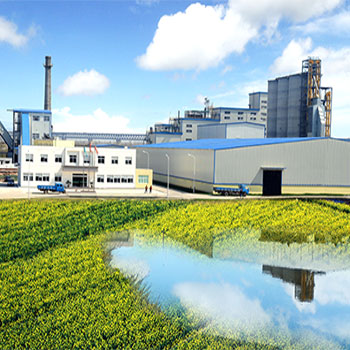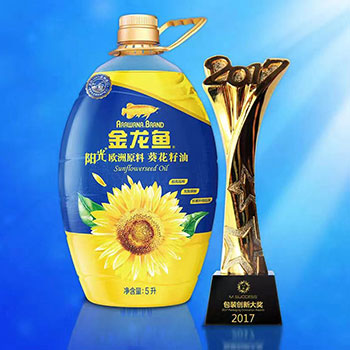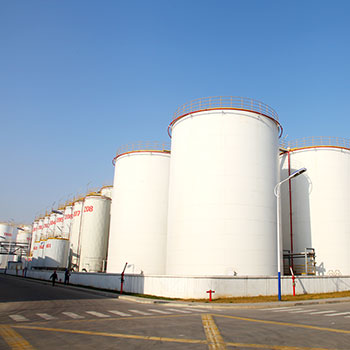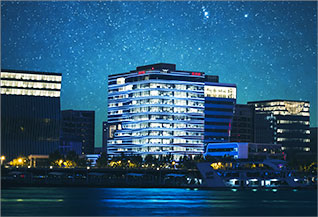In response to the increasingly severe global water challenges, the Company has incorporated a water management strategy of "Prioritizing Water Conservation, Managing Systematically" across all stages of production and operations. By proactively driving high-efficiency water management across the entire industrial chain, the Company is committed to reducing water consumption and wastewater discharge.
The Sustainability Committee and Senior Executive Team work as the main body responsible for water management strategy and performance, make decisions related to water management and report to the Board of Directors. The water resources management team under the Company's Senior Executive Team is responsible for the development, implementation and performance tracking of specific water management strategy, while the Sustainability Committee is responsible for strategy and performance assessment and implementation supervision.
Yihai Kerry strictly complies with the relevant laws and regulations in the places where it operates and conducts water resource analysis and assessment for areas with high water resource risks to reduce the risks as much as possible. The Company also strives to protect precious water resources by monitoring water consumption using a data-management platform, improving water-utilization and water-conservation measures, and raising awareness of water conservation among our employees.
We established a Water Resource Management Procedure to ensure the sustainable use of water resources and control the risk of water stress, enabling unified monitoring and centralized management of water resource utilization, water pressure risk, water intensity, water efficiency, and wastewate. As of 2024, we conducted Water Stress Risk Assessments for all operational sites (production-oriented) at a rate of 100%. We will promote the company's water management system through water resource demonstration, legal water abstraction permits, water balance tests, monitoring of water consumption, and water conservation awareness campaigns to protect the water resources environment in the locations where we operate.
Water Reuse
Surface water and groundwater are reused after reaching the standard through water purification facilities. To reduce wastewater discharge and conserve water resources, some of our factories reuse concentrated water. After further treatment, the external drainage from the sewage and the concentrated water from the water treatment are recycled and used as circulating cooling water and plant domestic water (washroom water, cleaning water, planting water, etc.),effectively reducing the waste of water resources.
In 2024, Yihai Kerry completed a total of 71 water-saving projects, achieving a water conservation of 3.9 million tons. So far, 48 operation sites (production type) have completed the certification of water-saving enterprises, and 49 operation sites (production type) have completed the water balance test.
Water footprint certification conduction
In accordance with the 2021 Commitment target: water footprint certification of some core products in 2022. In 2022, Yihai Kerry commissioned a third-party organization to carry out a water footprint verification of rice bran oil for the year 2021.
The water scarcity footprint of 1L of rice bran oil from gate to gate (i.e., the water footprint generated by the direct consumption of fresh water and the discharge of wastewater pollutants from raw materials entering the plant boundary through processing and production) is 0.7397 dm H Oeq/L; the water eutrophication footprint is 7.26 mgPO eq/L.
Rice Bran Oil Water Footprint Vertification Statement.pdf
Attention to water resources risk
With reference to the World Resources Institute's (WRI) ferry database and in conjunction with the average daily water withdrawal data, Yihai Kerry has classified the risk of water stress into five levels by adopting the method of "Comprehensive Average Daily Water Withdrawal = (Ferry Rating Data + Average Daily Water Withdrawal Level)/2".
We conduct annual water risk assessments for all the production and operating sites, and in 2024, the following water stress risks were identified for each subsidiary:

Reduce the risk of water stress at the operating site by identifying and assessing potential water stress risks, developing a program of appropriate response initiatives, and actively communicating and collaborating with various stakeholders.
In the future, we will continue to improve water risk management, strengthen water conservation and reuse, promote supply chain water conservation programs, and set realistic water conservation targets based on the continuous monitoring of water use.
-
 Environmental ManagementLearn more
Environmental ManagementLearn more -
 BiodiversityYihai Kerry is committed to biodiversity conservation in its operations and supply chain in accordan...Learn more
BiodiversityYihai Kerry is committed to biodiversity conservation in its operations and supply chain in accordan...Learn more -
 Green FactoryWhile bringing nutrition and health to consumers, Yihai Kerry always upholds the principle of green ...Learn more
Green FactoryWhile bringing nutrition and health to consumers, Yihai Kerry always upholds the principle of green ...Learn more -
 Circular EconomyYihai Kerry has innovatively developed new circular economy industrial models such as "rice cir...Learn more
Circular EconomyYihai Kerry has innovatively developed new circular economy industrial models such as "rice cir...Learn more -
 Reduce PollutionYihai Kerry will, in accordance with the Environmental Policy, always uphold the principle of compli...Learn more
Reduce PollutionYihai Kerry will, in accordance with the Environmental Policy, always uphold the principle of compli...Learn more -
 Sustainable PackagingYihai Kerry is committed to reducing the environmental impact of packaging in the production, distri...Learn more
Sustainable PackagingYihai Kerry is committed to reducing the environmental impact of packaging in the production, distri...Learn more -
 Tackling Climate ChangeYihai Kerry actively advances sustainability and aligns with national climate policies. Our Sustaina...Learn more
Tackling Climate ChangeYihai Kerry actively advances sustainability and aligns with national climate policies. Our Sustaina...Learn more -
 Energy SavingYihai Kerry strictly complies with the relevant laws and regulations in the places of operation,cont...Learn more
Energy SavingYihai Kerry strictly complies with the relevant laws and regulations in the places of operation,cont...Learn more -
 Sustainable SourcingYihai Kerry is committed to ensuring our sustainable and long-term products supply capability, reduc...Learn more
Sustainable SourcingYihai Kerry is committed to ensuring our sustainable and long-term products supply capability, reduc...Learn more

Service Hotline: 400-616-5757
Add: Arawana Building, No 1379 Bocheng Road, Pudong New District, Shanghai
Investor Contact Tel: 021-31823188
Investor Contact E-mail: jinlongyu_ir@cn.wilmar-intl.com
ESG Contact E-mail: Sustainability-Yihaikerry@cn.wilmar-intl.com
Copyright © Yihai Kerry All Rights Reserved.Copyright ©2009 京ICP备:12025066号-1































































































